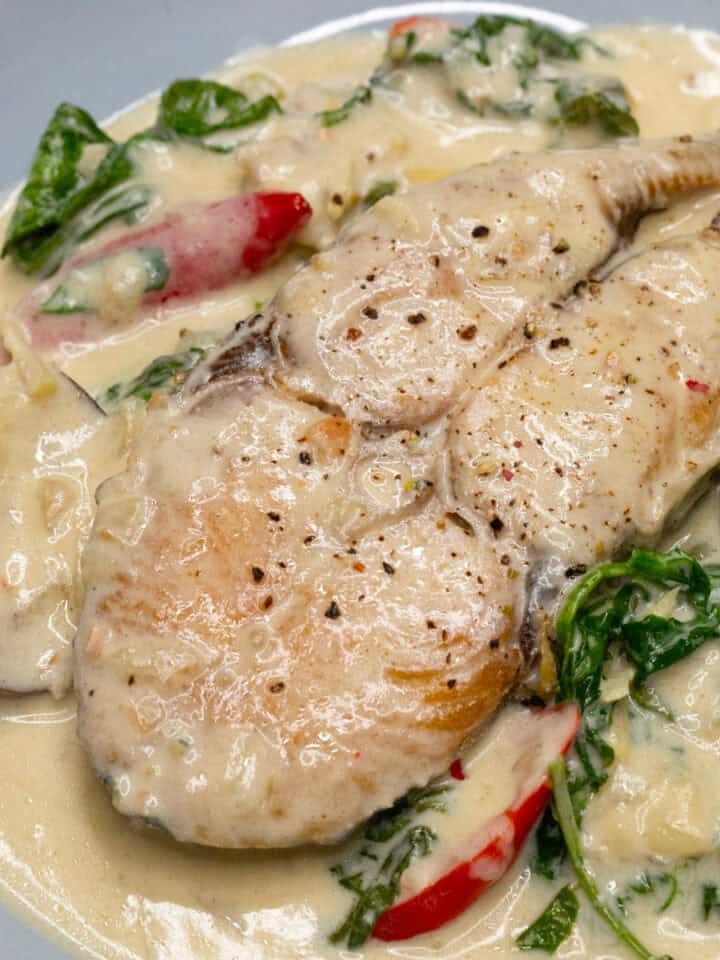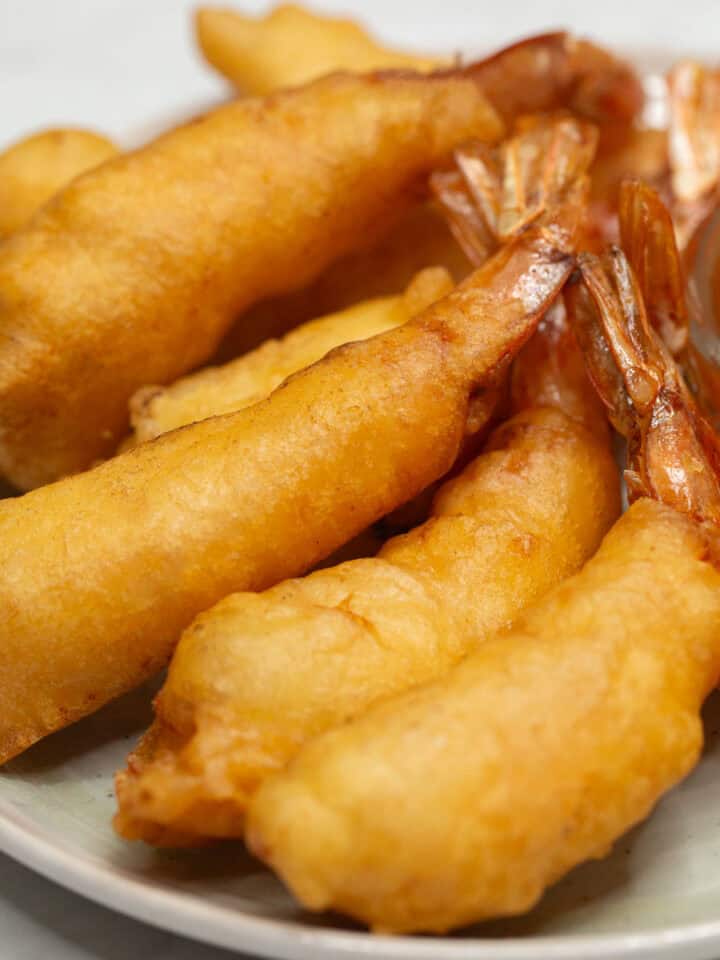Lye water, called "lihiya" or "lihia" in Filipino, is an essential ingredient that changes the texture and color of many desserts. Let's learn about its culinary applications, where to find it, and how to use it safely in your favorite Filipino recipes.

Jump to:
What is lye water?
Lye water is a potent, clear liquid that's safe for use in small quantities in cooking. It's an alkaline solution typically created by combining sodium hydroxide (NaOH), potassium hydroxide (KOH), or a slightly different composition with water.
In Filipino cuisine, it's a key ingredient that enhances the texture and color of rice cakes (kakanin), like Kutsinta and Pichi-Pichi, giving them their signature chewy bite.
Kansui, an alkaline solution made of sodium carbonate and potassium carbonate, works similarly in creating the springy texture and color of ramen noodles and mooncakes.

How is lye water used?
Lye is a versatile substance used in many applications. It changes the texture and color of foods, lending unique characteristics to Nordic lutefisk, pretzels, and bagels.
It transforms corn into hominy and removes the white pith of mandarin oranges for canning. It also softens the sharp taste of olives and contributes to the texture of century eggs.
And if you've ever enjoyed the gelatinous texture or firm bite of Filipino rice cakes or kakanin, you have lye water to credit for that.
Given its high alkalinity, it requires precision and care in handling. It's used sparingly in recipes to maintain balanced flavors and ensure food safety.
The FDA permits the use of sodium hydroxide as a food additive in amounts less than 1 percent. Industrial-grade lye is utilized in the production of various everyday items like paper, aluminum, commercial drain and oven cleaners, soap, and detergents.
Where to find lye water
Lye water is available in most Asian supermarkets, where it's typically sold in bottles. It is also readily accessible through various online retailers.
The labels may indicate that it's "food-grade" or suitable for culinary use. Food-grade lye has fewer impurities than industrial-grade, ensuring that it meets the guidelines set by the FDA for consumption.
Alternative to lye water
If it isn't available, you can use baking soda as a substitute, although it won't exactly mimic the unique effects on food texture and color. Baking it in the oven can increase its alkalinity, making it somewhat closer to lye water.
If you are considering making it at home, be careful as this process involves dealing with a caustic substance, and the results may not match the quality of store-bought lye water. However, if you're interested in a DIY approach, check out this baked baking soda recipe.
Safety precautions
According to the Centers for Disease Control and Prevention, sodium hydroxide is a potent chemical that can be harmful to individuals upon contact. When not handled properly, it can cause burns to the eyes and skin, as well as other health issues. The extent of harm depends on the duration and level of exposure.
Filipino recipes typically incorporate small amounts of lye directly with other ingredients, but when handling it on a larger scale, follow these precautions:
- Use Food-Grade Lye: Get it from trusted sources and keep it in its original container.
- Safety Gear: Always wear long, heavy-duty gloves, protective eyewear, and a face mask.
- Protective Clothing: Wear a heavy-duty apron, a long-sleeved shirt, and closed-toe footwear.
- Well-Ventilated Area: Work in a space with good airflow to avoid inhaling fumes.
- Non-Reactive Equipment: Use stainless steel or glass containers and non-reactive utensils.
- Safety First: Keep it out of reach of children and pets, and clean up spills promptly.
Filipino recipes with lye water
Lye water plays an important role in making traditional rice cakes. Here are some popular examples:
- Kutsinta: These orange-brown steamed rice cakes have a slightly sticky and chewy texture, topped with grated coconut, toasted coconut, latik, or grated cheese.
- Pichi-Pichi: Steamed cassava rice cakes with a chewy, gelatinous texture coated with freshly grated mature coconut.
- Suman sa Lihiya: A type of sticky rice cake made with glutinous rice, wrapped in banana leaves and simmered until it becomes soft and sticky. It is often topped with latik, a coconut caramel sauce.

Other ingredient guides you may like

Did you like this post? I would love to know! Your feedback helps me make better recipes. Please rate, review, or comment below. Questions about this post are welcome, too!
Let's connect on Facebook, Instagram, Pinterest, TikTok, Twitter, and Youtube. Be sure to tag me when you try any of my recipes @recipesbynora!











Karen
What happens if i use too much lye?
Mark Reyes
Hello Karen, If you use too much lye in your recipe, it can make your food taste bitter and even become unsafe to eat. Always follow the recipe carefully and be safe when using lye, as it can be harmful. If you think you've used too much, it's better to start over.